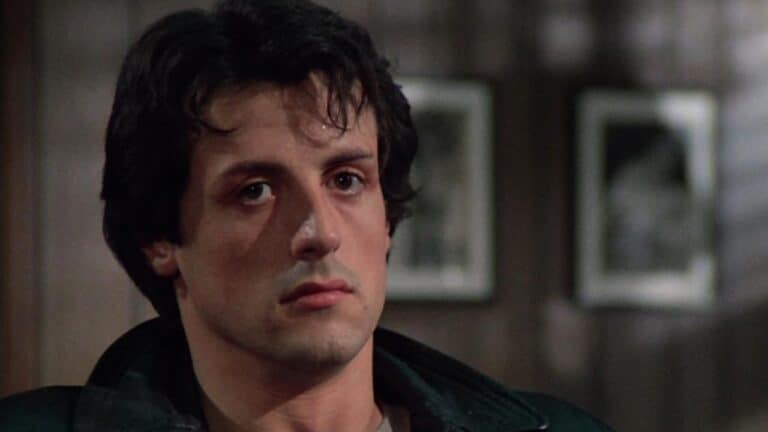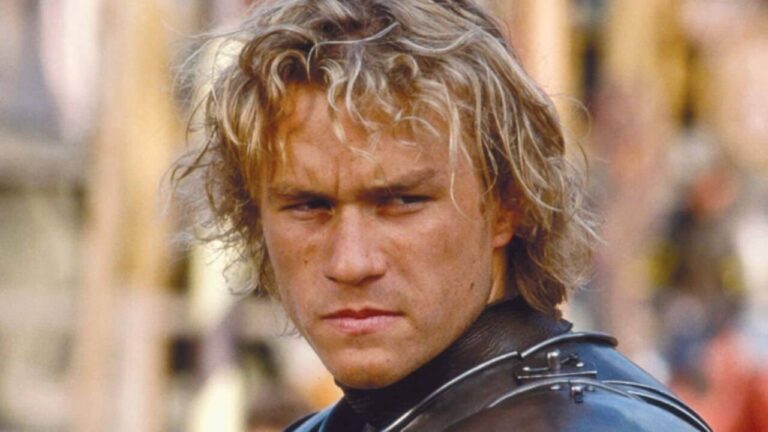These Nostalgic TV Commercials Influenced Pop Culture and Still Entertain

Since the dawn of the TV broadcast era, television commercials have been considered a necessary evil. Studios needed sponsors to turn a profit from the content they provided, and thus, the television commercial was born.
This unique form of advertising has evolved over the decades, from the classic broadcast era of sitting through dozens of commercials to the introduction of digital recording devices in the early 2000s, which allowed watchers to fast-forward through mundane advertisements. The recent streaming boom has reinvigorated commercials in a big way unless you want to shell out a small fortune for the advertising-free subscription plans.
But through these many modes of content delivery, a few commercials manage to break through with fresh, clever, and entertaining watches with their nugget-size run times. Yes, they still market a product and encourage people to spend more money, but they do it with style, wit, and sometimes a catchy jingle.
Find here a collection of standout commercials that sometimes entertained more than advertised.
The Energizer Bunny

In 1989, the Energizer battery maker launched an ad campaign that keeps going and going…and going. The long-running commercial series features the company’s mascot, a pink mechanical rabbit wearing sunglasses who never stops banging a drum emblazoned with the Energizer logo. Through creative settings, viewers witness that feisty rabbit fully (ahem) energized while lesser battery-powered devices fail.
During the 1990s, when nearly every toy required batteries, the Energizer campaign demonstrated marketing genius at its finest. And 35 years later, that magenta-furred bunny goes and goes with no end, launching many internet memes and catchphrases.
The Apple Macintosh Personal Computer
-

Image Credit: Apple Computer Inc.
The Apple corporation enjoys a long history of flashy, clever ad campaigns marketing the company’s groundbreaking products. This legacy started with the company’s co-founder Steve Jobs, known as quite the showman in his early 80s heyday when Apple was still an upstart tech company.
In 1984, Apple launched the ambitious Macintosh personal computer, a product that would revolutionize the (then) nascent home computer industry. Jobs recruited none other than fan-favorite director Ridley Scott to helm a big-budget commercial to air during the Superbowl. The 60-second spot shows a gathering of workers in a dystopian factory, only to be freed by a brightly colored figure throwing a hammer at a TV screen spewing fascist rhetoric. As the screen explodes, a narrator announces that the introduction of Macintosh will prevent 1984 from being like George Orwell’s 1984.
Now celebrating its 40th anniversary, the 1984 Macintosh commercial remains a masterpiece of pop culture advertising. Filmmaker Scott deserves much of the credit, as the spot features his stylistic flourishes inspired by Orwell’s bleak novel. No surprise as the visual director cut his teeth directing commercials before moving into the feature film arena.
Wendy’s (Where’s the Beef?)

Another commercial celebrating 40 years is Wendy’s “Where’s the Beef” campaign, which highlights the fast-food chain’s juicy hamburger offerings. The cute ad features three old ladies staring at a burger with huge buns engulfing a tiny slice of meat, provoking one of the ladies to yell, “Where’s the Beef?” A narrator explains that Wendy’s single burger has more beef than the Whopper and the Big Mac.
The simple ad with the funny catchphrase shows why the “less is more” approach always works. Wendy’s developed a quirky slogan that cuts its competitors’ bigger-sounding burgers down to size, so to speak. It helps that the commercial’s stylized and deadpan humor, delivered by a trio of cute grandmotherly types, made the spot a viral hit when no internet existed. Today, fans can see “Where’s the Beef?” littered across the pop culture landscape with endless memes and gifs.
Coca-Cola (I’d Like to Teach the World to Sing (In Perfect Harmony)

Since its 1886 debut, Coca-Cola has launched many famous advertising campaigns. But in 1971, the brand-name soda maker hit the bullseye with one of the most successful commercials ever. Anchored by the catchy jingle “I’d Like to Teach the World to Sing,” the nearly minute-long spot showcases a diverse collection of teenagers singing the earworm on a hillside in a show of hope and unity.
Of course, the ad’s real aim was to “buy the world a Coke,” and the song incorporated the company’s 1971 slogan, “It’s the real thing,” into the lyrics. The commercial gained such notoriety that the tune’s original songwriters, Roger Cook and Roger Greenaway, rewrote a more extended version that dropped the product references. When it was re-recorded twice by The Hillside Singers and The New Seekers, both versions became chart-topping hits.
The hopeful commercial received renewed relevance when it was featured in the 2015 series finale of Mad Men. The prestige drama followed the ruthless exploits of advertising exec Don Draper, played by Jon Hamm in his star-making turn. In a touch of irony, Draper’s cynical journey ends with him at a retreat seeking enlightenment, bookended by one of the catchiest marketing jingles of all time.
AT&T (You Will)

Commercials seldom accurately predict the future, but AT&T wandered into Nostradamus territory with its “You Will” campaign. The telecom giant launched a series of commercials in 1993 showcasing the sleek, high-tech, and instant services AT&T would soon provide the world. In the pre-internet age, these spots had a cool, Jetson-like factor that hinted at how the internet would reshape consumer society.
Directed by David Fincher and narrated by Tom Sellick, the marketing campaign highlighted the coming of streaming television, face timing through a phone, purchasing movie tickets from a kiosk (and choosing a seat!), and GPS maps guiding travelers to their destination. At a time when society was stuck in an analog world, these prescient commercials gave consumers a preview of the coming wireless internet that has become pretty much standard 30 years later.
Ironically, AT&T would not be the company ushering this utopian future, but rather one of many. Arguably, Apple, Amazon, and many others did more to build the framework of the current instant technology that seemed distant in 1993.
Life Cereal (Mikey Likes It)

In 1971, Quaker Oats began airing this popular and long-running commercial series starring “Little Mikey” to promote its Life breakfast cereal. The commercial portrays two brothers suspicious of the healthy (and thus bad-tasting) cereal, handing it off to their sibling Mikey (who hates everything) for some sacrificial taste testing. When Mikey starts to shovel the cereal into his mouth, his two older brothers exclaim in astonishment, “He likes it!”
The precocious performance of the three stars, played by real-life brothers Michael, Tommy, and John Gilchrist (as hard-to-please Mikey), made the ad so endearing. They eschew the overly cutesy tone that dominated many 1970s-era child stars, instead embracing scrappy performances.
The “Mikey Likes It’ ad campaign stayed in rotation for nearly 12 years, becoming a staple of the Saturday morning cartoon era. The sequel ads featured a college-age version of the finicky Mikey before the campaign was retired in the late 1980s.
McDonalds (Ronald McDonald)

Most people view the classic circus clown as the stuff of nightmares, but once, children adored those brightly colored demons. And in 1963, McDonald’s debuted the fast-food chain’s long-running mascot, Ronald McDonald, taking inspiration from the popular Bozo the Clown. The combination of the Ronald mascot with McDonald’s many food offerings to kids, particularly the Happy Meal, proved to be a potent combination.
Ronald lives in the fictional world of McDonald Land, embarking on many adventures with his friends, Mayor McCheese, the Hamburglar, Grimace, Birdie the Early Bird, and the Fry Kids. The series of commercials that aired during the 1980s embraced a Sesame Street vibe that made these characters evolve past their marketing origins. The fast-food chain deployed the Ronald-themed commercials during the beloved Saturday morning cartoon hours when kids were glued to the television.
The recent transformation of clowns into nightmarish creatures forced McDonald’s to rethink its signature mascot. Due to lagging sales, McDonald’s abandoned its brightly colored, kid-friendly look, embracing a generic Starbucks tone to lure back wealthy adults.
There’s not much use for the clownish Ronald in this new landscape, but he remains the face of the fast food chain’s charity, Ronald McDonald’s Houses, which helps parents with chronically sick children.
Trix Cereal (Trix Are for Kids!)

General Mills created another commercial staple of the Saturday Morning Cartoon era with their Trix Rabbit character promoting their popular breakfast cereal. Introduced initially as a puppet in the late 60s, Trix evolved into a cartoon rabbit who uses a variety of disguises to “trick” kids into giving him a bowl of cereal. The commercials usually end with the kids seeing through the rabbit’s charade, stating the iconic “Silly Rabbit, Trix are for Kids!”
The cereal maker produced dozens and dozens of the Trix Rabbit commercials, becoming a standout in the booming sweetened cereal industry. Nearly every branded cereal has its cartoon mascot, but Trix, next to Cap’n Crunch, remains the most popular due to its clever “Trix are for kids” tagline. A stroll down the grocery cereal aisle reveals that the silly rabbit is still tricking kids some 60 years later.
Calgon (Take Me Away)

In the 1970s, the bath and beauty line Calgon created one of the greatest and most memed slogans with its “Take Me Away” commercial series. The marketing campaign targeted overworked Moms, featuring a frustrated woman complaining of everyday stresses like their boss, the baby, the traffic, and the dog. She then yells, “Calgon, take me away!” where we cut to the woman taking a serene bath filled with soothing Calgon soap.
Calgon shrewdly introduced the catchy tagline just as women were entering the workforce, where they were expected to hold down a job and remain homemakers. The commercials continued to air through the late 80s, but the “take me away” catchphrase remains part of Calgon’s branding to this day.
Sun-Maid (The California Raisins)

In 1986, Sun-Maid debuted their enormously successful commercial series starring the animated “The California Raisins” music group. The stylized claymation clips featured the anthropomorphized raisins singing the R&B classic “I Heard It Through the Grapevine” in various settings, terrorizing then charming human onlookers. Viewing the commercials 40 years later, the janky animation style gives the shorts a cute yet creepy tone.
Sun-Maid hit the merchandising bullseye when “The California Raisins” became a pop culture phenomenon. The ads spawned albums and a single that charted on the Billboard Hot 100, an Emmy-nominated mockumentary special, and a Saturday morning cartoon show. However, “The California Raisins” ‘ lasting legacy showcased the unique potential of the claymation art form.
The Raisins disbanded in 2002 when The California Raisin Advisory Board collapsed due to the campaign’s massive budget. Many members of the grape farming industry faced higher fees due to the expensive advertising while not sharing in the “grapevine” profits.
Geico (The Caveman)

Auto Insurance company Geico proved that “caveman” shaming made for great advertising when it introduced its Caveman character in 2004. The commercial series features a modern-day Neanderthal taking offense at Geico’s catchphrase, “so easy, a caveman could do it,” highlighting the company’s new website. The most popular clip features the Caveman strolling past a poster with the (ahem) offensive tagline, only to circle back looking perplexed and angry.
Much like Sun Maid’s “The California Raisins,” Geico’s new mascot became a licensing bonanza when the commercials pierced the pop culture landscape. The auto insurance’s meme-ready “Cavemen” coincided with the early 2000’s internet explosion, which was perfect for the auto insurance’s splashy new website. The Cavemen eventually headlined a TV spinoff in 2007, but the sitcom was quickly canceled after sagging ratings, unable to capture the charm of the popular commercial series.
Alka Seltzer (Plop, Plop, Fizz, Fizz)

Sometimes, an ad needs a catchy jingle to help it break free from the dull commercial doldrums. The marketing execs at Alka Seltzer crafted one of the best with the antacid’s “plop, plop fizz, fizz, oh what a relief it is” earworm that debuted in 1976. Nearly 50 years later, the clever jingle remains forever lodged in many Gen Xers’ cerebral cortexes.
The Alka Seltzer “plop, fizz” campaign launched by reviving the company’s stop-motion mascot Speedy, an uber creepy doll whose body was an Alka Seltzer tablet while he wore another as a hat. Thankfully, Speedy was scrapped in favor of simpler images of two Alka Seltzer tablets dropped in a glass of water before a gluttonous wreckage of food and sweets.
In addition to alleviating consumers’ stomach-induced heartburn, the double “plop, plop” imagery also relieved Alka Seltzer’s once-flailing bottom line. The simple jingle effectively doubled the company’s sales by encouraging users to double their dose with two tablets.
Nike (Just Do It)

Is there no more perfect tagline than Nike’s “Just Do It?”
The bold phrase sounds universal and deeply personal, making it an ideal fit for the sports-loving community. The shoe company debuted a sprawling media campaign in 1988 that turned the aggressive three-word sentence into an iconic statement that still resonates today. The result was a sales boom for Nike, increasing its market share in the North American sports shoe business from 18% to 43%.
Nike successfully leveraged “Just Do It” to transform its utilitarian sneakers into a fashion statement. The empowering phrase became an anthem of success, filling the campaign’s media spots with A-list celebrities and athletes. By embracing Nike’s “Just Do It,” you were making a lifestyle choice — just as long as you dropped hundreds of dollars on their ridiculously priced shoes in the process.
Nike trademarked the “Just Do It” phrase, making it part of its logo. If you wander through any shoe section at your local retail outlet, you will probably see the phrase somewhere. But trademark or no trademark, the theme can encourage anyone to jump and reach for the stars.
Budweiser (Whassup?)

In 1999, Budweiser introduced the first great catchphrase of the millennium with their “Whassup” commercial series. During Monday Night Football, the beer company debuted the spot, featuring a group of Bud-loving friends creating a cacophony of “Whassup” as they yell the phrase to each other in comical ways. The frat bro chemistry between the buddies, who shamelessly lean into the coarse phrasing with glee, makes the ad so much fun.
The campaign was based on the short film True by writer/director Charles Stone III. Similar in tone to the Budweiser spots, Stone and his friends exaggeratedly yell “Whassup” over the phone. When the beer maker licensed the theme from the filmmakers, they enlisted Stone to direct many of the commercials, keeping the many childhood friends who starred in his original short to reprise their roles.





